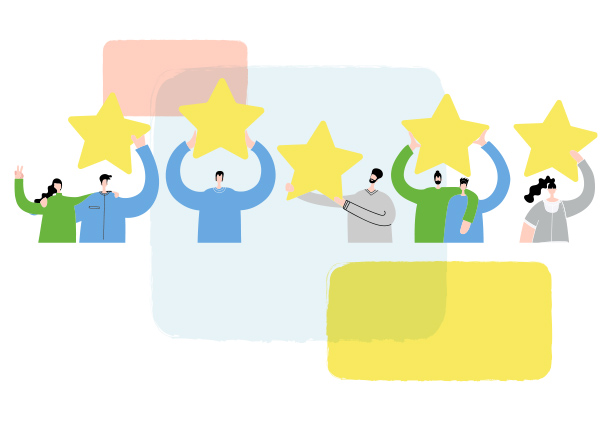Chatbots
People these days have come to expect instant on demand assistance. Having an FAQ used to address some of this in the past, but now people want something a little more proactive that won’t require them to take a deeper dive into your page alone.
People also feel more comfortable when concerns and questions are anticipated. It also sets an idea in their mind of the kind of support levels to expect.
If you are reviewing a software product that you like for example, you’re going to want to know that if you get stuck at some point, you’ll have motivated support service resources available to you around the clock.
Excellent service can even be valued over a comparable more technically functional and diverse product. I think we’ve all had examples of this:
“Well, X product might technically do a little more than Y, but I understand Y and if I ever have any problems; the support and service at Y is excellent”.

That’s a no-brainer for most of us because it gives us a perception that we are not just buying a standalone product, but an entire package or system. The automation provided by chatbots helps deliver this confidence in high levels of expected service.
Chat bots have been around for a little bit, but with the advancements in AI, they have become much more useful and appreciated.
Also, with things like Google’s Alexa and Apple’s Siri, people are more and more accustomed to having AI do their bidding. The trust level is higher. That trust puts people at ease and that leads to higher CTA results.
Beyond all of this, chat bots are not difficult to set up and they can also save you loads of time spent having to respond to various product inquiries.
Chat bots might have been ahead of their time at first, but 2019 is predicted to be the year they gain not only full acceptance, but also user expectation.
Where to use it?
Complex products that have a lot details to deliver and products that come with a high post-purchase service expectation.
More Video

This one should be no surprise, video has and continues to dominate, and 2019 shows no change in this trend.
The good news is, bandwidth is higher on average so delivering video is much easier than it used to be. People also have developed the habit of learning from video.
Want to replace the faucet on your sink, but you’ve never picked up a wrench in your life? Well, nowadays, people are more likely to search for one of the millions of DIY videos on YouTube, than they are to just pick up the phone and call a plumber.
You can take advantage of this leverage by giving your visitors a video that address the simplicity and value your product provides without making them have to (God forbid) read something.
Where to use it?
Almost everywhere, (people are lazy), but especially products that want to show a more relatable and warm human image. Also, if your ad copy requires a longer read to get the point across, you may want to consider video.
Clean Minimalism
The example in this page from Flickr excelently shows the emotive power of simplicity. Consider each element for your landing page and ask yourself if it truly needs to be there. Is it driving toward your CTA? Does it have some other functional purpose? Make sure you are constantly asking these questions. Minimalist loading pages also have the advantage of loading faster and with fewer complications.
It also lends clout and class to your brand. Think of the most over-the-top “addy” ad you’ve ever seen. Who uses them? Does it inspire you with confidence in the brand or just make you think a bunch of amateurs are saturating your eyeballs with a busy, desperate pleas to please buy their product?
As an example from the past compare Google with Yahoo (RIP). People were much more put at ease by Google’s extremely basic homepage search window that delivered only what people wanted.
Yahoo on the other hand bombarded them with ads and widgets and seemed cheap and a little desperate. Yahoo made more than just this one mistake, but it was by far their first major mistake in the “search engine wars” of the past. Sometimes less is more.
Where to use it?
Products and brands that you want to present as being fashionable and sophisticated. Also, simpler products and services that are very easy to understand and don’t require too much detail to get across.
Multiple, Tailored Landers
Once again, people have come to expect a customized experience that ultimately delivers them to the same path, regardless of where that entered from or what device that are accessing your page from.
You can’t get away with over generalizing anymore. Take into account where your visitors are coming from and how they are accessing your page. Not only that, but whatever details that you know about a potential customer can help you deliver a lander that will convert best for that user.
The great news is that with the tools we have these days to track, filter, group and test our incoming traffic, it’s never been easier, so if you’re not doing it, you only have yourself to blame.
Where to use it?
Almost wherever you can. Think of this as a part of your optimization and testing.
Multiple Examples of Social Proof

It’s no secret that social proof has always been powerful. In 2019 people are spoiled with choices and social proof becomes even more important.
We live in an age of information overload. When that happens people don’t always know what slick design or video to choose over another.
Something that does resonate when people feel bombarded however is connecting to the human side of the brand. Testimonials and social proof are excellent at helping people make those connections.
People like to see a community they identify with and they like to know that others have come before them and have positive experiences to report.
Look at the popularity of sites like yelp. If you’re a restaurant owner these days, you know (fair or not) that a bad yelp review to sink your business. On the other hand, good reviews and engaging reviews can be a gold mine.
Put your social proof out front and center and make sure to re-address it throughout the page. People not only follow the herd, they actually get a good feeling from it. Help deliver that feeling and watch your sales grow.
Kinetic Typography

When done correctly, these techniques can add style as well as personalization to a brand or offer. So what is it? It’s kind of just a technical name for moving or reactive text.
The text can become a micro interactive element that helps lift the text and message forward to the user. It gets noticed more and expands your design.
It should ideally be used with a light, subtle touch; we don’t want letters that shoot into flames and start spinning on every mouseover, but if it helps shape the text I’m reading, hovering over or clicking on into an element that is easier to read and interact with, it helps to build on the that powerful perception of customization.
Even the text itself can literally be set to show different customized versions of ad copy, depending on the user details are where the traffic is originating from. This might be a partial solution to having multiple landers as we discussed previously, but this will only switch up the text and when we are testing multiple LP’s we should be doing more than just swapping out the ad copy alone. It’s best to pair this function together with multiple LPs when testing.
Where to use it?
It’s a lot like video or other animations and it such useful lots of scenarios. If you are looking call something out and make it easy to understand, you can use theses techniques to guide to users focus.
Conclusion
The best takeaway here is that many of these things highlighted in this article aren’t new, but that they are ready to show dominance in 2019. The technology, functionality and bandwidth has finally caught up with many of these media heavy and interactive concepts. People have more choices than they need and to connect with them we want to send a clear simple signal that is tailored to the individual and is easily packaged for them.




